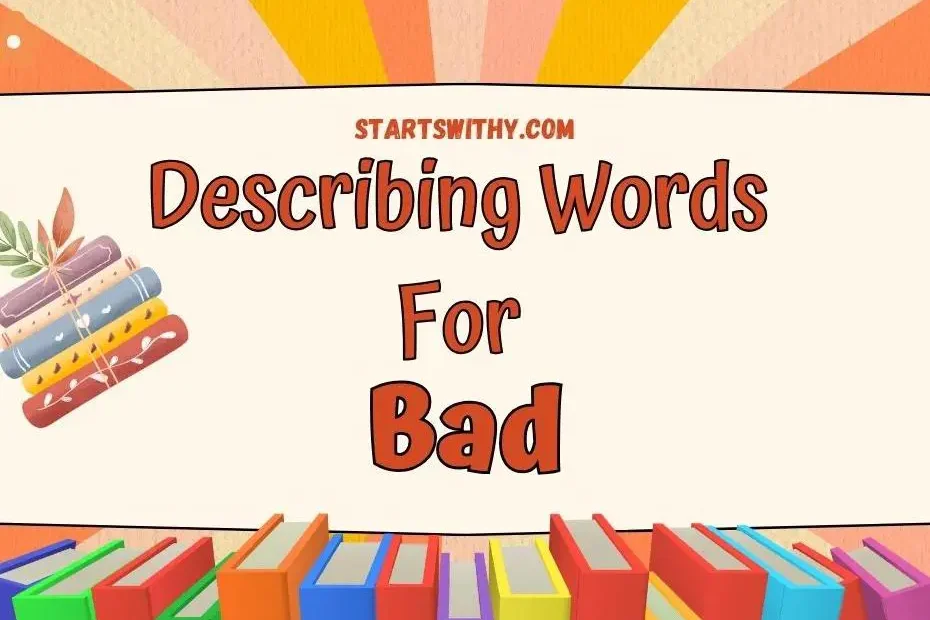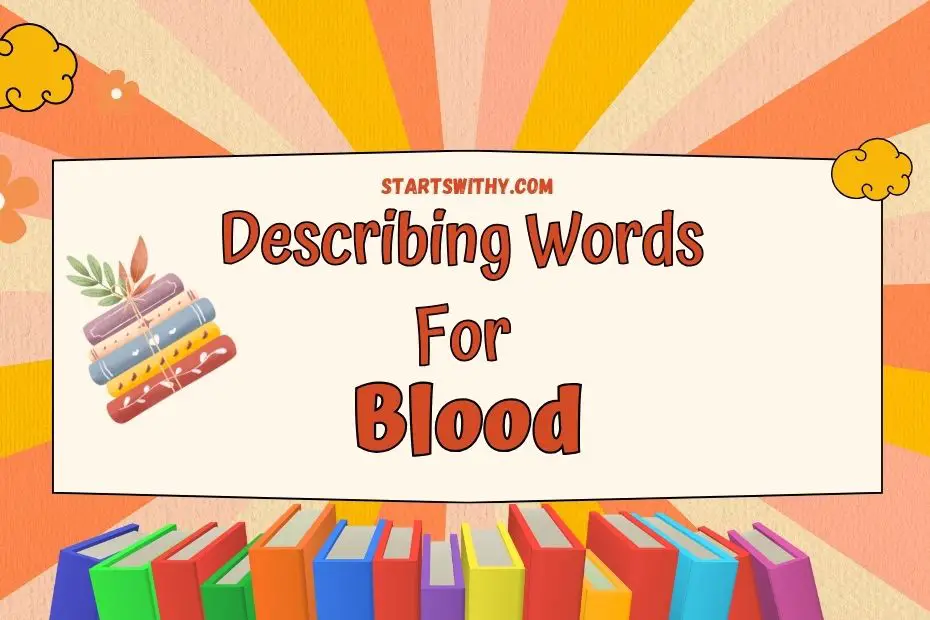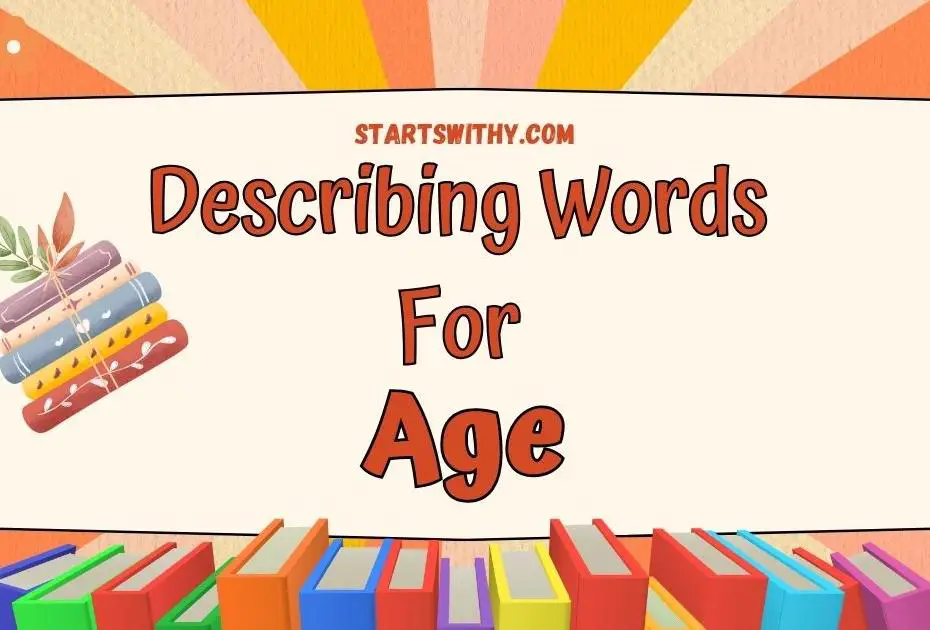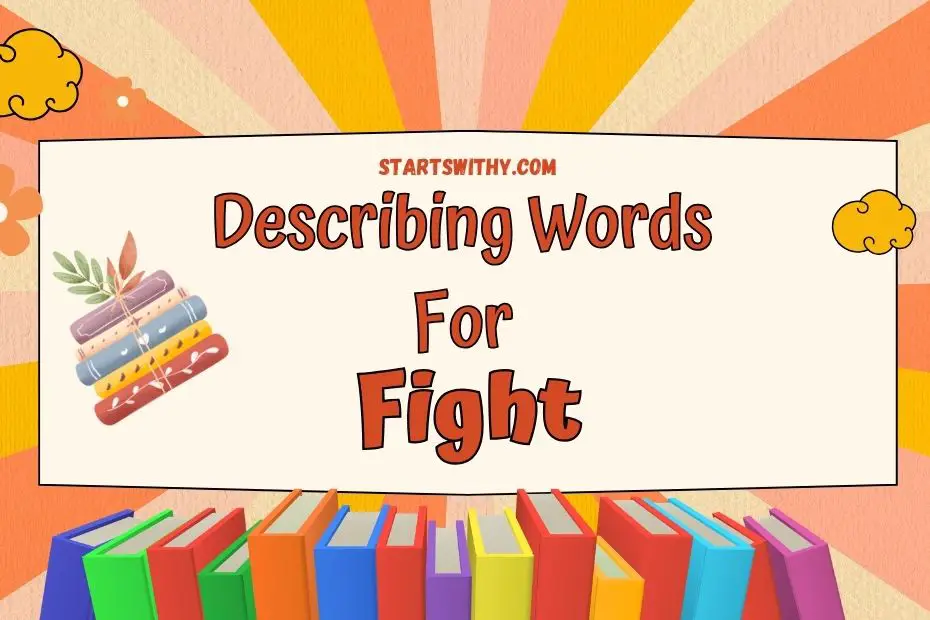When it comes to describing something negative, we often default to the word “bad.” But let’s face it, that word can be a bit lackluster and overused. That’s why I’m here to introduce you to a whole arsenal of adjectives that can help you add depth and nuance to your descriptions of negativity. From mild annoyances to major disasters, these adjectives for “bad” will help you paint a more vivid picture and make your writing come alive. So, buckle up and get ready to explore a world of words that will take your descriptions to the next level.
We all encounter situations, people, or experiences that fall into the realm of “bad” at some point in our lives. But why settle for a generic label when you can dive into a treasure trove of adjectives that capture the essence of negativity in a more precise and powerful way? Whether you’re a writer looking to enrich your prose or simply someone who wants to expand their vocabulary, this article will be your guide to adjectives that pack a punch. So, let’s delve into the realm of “bad” and discover a whole new range of descriptive words that will elevate your language and captivate your readers.
How to Describe Bad? – Different Scenarios
When it comes to describing something negative, using a range of adjectives can greatly enhance your language and captivate readers. Instead of relying on the overused word “bad,” let’s explore a variety of descriptive words that pack a punch.
- Terrible – This adjective can be used to describe something that is extremely bad or unpleasant. It conveys a strong sense of negativity and emphasizes the severity of the situation. For example, “The weather was terrible, with heavy rain and strong winds.”
- Awful – When something is described as awful, it suggests that it is exceptionally bad or of very poor quality. It is a versatile word that can be used for various scenarios, such as an awful movie, an awful experience, or an awful taste. For instance, “The food at the restaurant was awful, with no flavor and overcooked.”
- Dreadful – This adjective is used to describe something that is extremely unpleasant or shocking. It creates a sense of horror or fear, emphasizing the intense negative emotions associated with it. For example, “The accident was dreadful, with multiple injuries and severe damage.”
- Horrible – When something is described as horrible, it implies that it is extremely unpleasant, causing great discomfort or distress. It can be used to describe a wide range of negative experiences, such as a horrible headache or a horrible smell. For instance, “The noise coming from the construction site was horrible, making it impossible to concentrate.”
- Atrocious – This adjective is reserved for describing something that is shockingly bad or of very poor quality. It carries a strong negative connotation and can be used to express strong disapproval or criticism. For example, “The service at the restaurant was atrocious, with rude staff and long wait times.”
By using these powerful adjectives, you can add depth and nuance to your descriptions of negativity. Whether you are a writer looking to enhance your prose or someone who wants to expand their vocabulary, exploring a range of descriptive words will elevate your language and engage your readers.
Remember, words have the power to evoke emotions and create vivid imagery in the minds of your readers. So don’t settle for using the same old “bad” – let your language shine by incorporating a variety of impactful adjectives into your writing.
Describing Words for Bad in English
Describing Words for Bad in English
When it comes to describing something negative, the word “bad” may not always do justice in expressing the level of intensity or severity. As a writer, it’s important to enhance our language by incorporating a variety of impactful adjectives. Here are some alternative words that can add depth and nuance to your descriptions:
- Terrible: Used to describe something of extremely poor quality or causing great distress. For example, “The weather was terrible, with heavy rain and strong winds.”
- Awful: Similar to “terrible,” this adjective is often used to describe something extremely unpleasant or of low quality. For instance, “The food at that restaurant was awful; we couldn’t even finish our meals.”
- Dreadful: This adjective emphasizes a sense of fear or apprehension. It can be used to describe something extremely bad, causing great concern or unease. For example, “The accident was dreadful; it left a lasting impact on the entire community.”
- Horrible: An adjective used to describe something causing a feeling of disgust or extreme discomfort. For instance, “That movie was horrible; I couldn’t bear to watch it until the end.”
- Atrocious: This adjective is reserved for something truly shocking or horrifying. It is often used to describe things that are morally wrong or of the worst possible quality. For example, “The condition of the house was atrocious; it was in complete disrepair.”
By incorporating these adjectives into your writing, you can paint a vivid picture and engage your readers on a deeper level. Remember, the goal is to use diverse vocabulary and sentence types, creating a natural flow and coherence in your writing.
Now that we have explored some alternative adjectives for “bad,” let’s move on to another aspect of enhancing our language and expanding our descriptive vocabulary.
Adjectives for Bad
Positive Adjectives for Bad with 10 Example Sentences
When describing something negative, it’s important to use varied and engaging vocabulary. Here are some positive adjectives that can replace the word “bad” to add depth and nuance to your writing:
- Terrible: The movie was terrible, with a predictable plot and mediocre acting.
- Awful: The weather today is awful, with heavy rain and strong winds.
- Dreadful: The food at that restaurant was dreadful; it was totally undercooked.
- Horrible: The traffic this morning was horrible. I was stuck in gridlock for hours.
- Atrocious: The service at the hotel was atrocious. The staff was rude and unhelpful.
- Appalling: The condition of the bathroom was appalling. It was dirty and smelled terrible.
- Disastrous: The party turned out to be a disastrous event. Nothing went as planned.
- Grim: The economic forecast for the country is grim, with rising unemployment rates.
- Dire: The team’s performance in the game was dire; they lost by a large margin.
- Harrowing: The movie depicted a harrowing story of survival during a natural disaster.
Negative Adjectives for Bad with 5 Example Sentences
Sometimes, you need to emphasize the negativity of a situation. Here are some negative adjectives that can replace the word “bad” to convey a stronger sense of negativity:
- Horrendous: The accident was horrendous. There was extensive damage to the vehicles involved.
- Catastrophic: The fire caused catastrophic damage to the building, leaving it in ruins.
- Devastating: The loss of a loved one can have a devastating effect on one’s emotional well-being.
- Tragic: The news of the plane crash was tragic, with many lives lost.
- Grim: The company’s financial situation is grim, with declining sales and mounting debts.
Using these alternative adjectives can enrich your writing and captivate your readers. Remember to experiment with different vocabulary and sentence structures to keep your writing engaging and interesting.
Synonyms and Antonyms With Example Sentences
Synonyms and Antonyms With Example Sentences
Synonyms for Bad
When it comes to describing something negative, there are several synonyms for the word “bad” that can add depth and nuance to your writing. Here are a few alternatives that you can consider:
- Terrible
- The movie I watched last night was terrible. It had a confusing plot and subpar acting.
- Awful
- The weather this weekend was awful. It rained the entire time, and I couldn’t go outside.
- Dreadful
- I had a dreadful experience at the restaurant last night. The food was undercooked and the service was slow.
- Horrible
- The traffic during rush hour is always horrible. It takes me twice as long to get home.
- Atrocious
- The student’s handwriting was atrocious. I could hardly read what they had written.
Choosing these alternative adjectives can make your writing more engaging and descriptive, as they highlight different aspects of negativity.
Antonyms for Bad
On the other hand, if you want to describe something in a positive light or as the opposite of “bad,” there are antonyms that you can use. Here are a few examples:
- Good
- The weather this weekend was good. It was sunny and perfect for outdoor activities.
- Excellent
- I had an excellent experience at the restaurant last night. The food was delicious and the service was top-notch.
- Wonderful
- The movie I watched last night was wonderful. It had a captivating storyline and brilliant performances.
- Great
- The traffic during the weekend is usually great. It’s less crowded, and I can get to my destination faster.
- Fantastic
- The student’s presentation was fantastic. They did thorough research and delivered their points with confidence.
Using these antonyms instead of the word “bad” can help you convey a positive tone and add variety to your writing.
Remember, incorporating diverse vocabulary and sentence types is essential for creating a natural flow and engaging your readers. By using synonyms and antonyms, you can enhance your language and make your writing more compelling.
Conclusion
Expanding our vocabulary and incorporating a range of adjectives is essential for effective and engaging writing. In this article, we have explored various adjectives that can be used to describe something negative instead of relying on the word “bad.” By introducing alternatives like “terrible,” “awful,” “dreadful,” “horrible,” and “atrocious,” we can add depth and nuance to our descriptions of negativity. Additionally, we have highlighted positive adjectives such as “good,” “excellent,” “wonderful,” “great,” and “fantastic” as antonyms for “bad,” allowing for a more balanced and dynamic language.
By utilizing a diverse vocabulary and incorporating different sentence structures, we can create a natural flow and coherence in our writing. This not only enhances the clarity and impact of our message but also captivates and engages our readers. So, let’s embrace the power of adjectives and strive to enrich our writing by exploring the vast array of words available to us. Together, we can elevate our language and create more compelling and memorable content.



